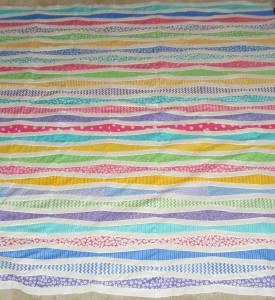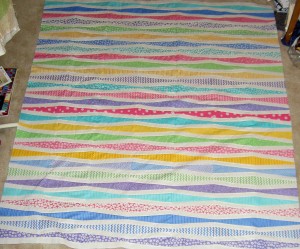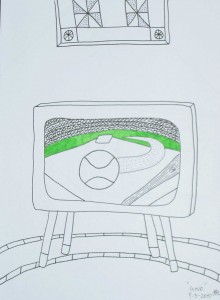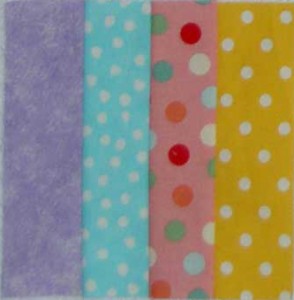WHY??? Why does Cynthia do this to me? ![]()
|
Commentary about works in progress, design & creativity
WHY??? Why does Cynthia do this to me? ![]()
|
 Patchwork Souvenirs of the 1933 World’s Fair by Merikay Waldvogel
Patchwork Souvenirs of the 1933 World’s Fair by Merikay Waldvogel
My rating: 4 of 5 stars
I love history of quiltmaking books because of the stories of the people. This book is one of the reasons I always put labels on my quilts. I also like looking at the old patterns and thinking about people making some of the patterns with crazy angles.
Update 9/20/2010: The University of Nebraska at Lincoln International Quilt Study Center now has a vidcast up that talks about this book and recent discoveries of additional quilts. Merikay Waldvogel narrates the vidcast and shows photos of quilts found after the book was published. She also tells stories and scandals about the makers and the quilts. Well worth a listen. I found it on iTunes.

This project was, in some respects, all about the fabric and using a whole line of fabric. However, it became more about the piecing as I worked through the rows. It was a pleasant challenge to cut, press, sew, press, trim sew and press. I was able to use the bias to put the rows together so the colors would match. I think it looks nice.
I kept the bias and the softness of the Moda Jelly Roll strips under control with Mary Ellen’s Best Press.
You cannot see the edges because I had to take the picture at an angle. I even stood on my desk and wasn’t tall enough to snap the top straight on.
I want you to see the edges, because I want your opinion on what I should do for the borders.
First, I am only applying a border to two sides. The other two sides have a slightly angular edge and I want to keep that as a design element.
Second, I am not much into chopping off edges, even if that is the piecing pattern. I prefer self bordering my quilts, which finishes out the design from the middle. This is a different kind of quilt, which makes me think self bordering isn’t possible here.
Third, if self bordering is possible, I don’t know that I have the patience.
Fourth, the spiky border, a la Gwen Marston, seems to too spiky for this piece.

In the second photo, you can see the two edges, where the color ends abruptly, that I will border. My first thought is to sew some strips of Kona Snow on them and then add soem color somehow. Fan like elements, perhaps?

I had just been to a baseball game when I was ready to do this prompt. Our team is in the top of the NL West, for today, at least. Perhaps this can be considered an homage?
For more information, see the original prompt.
It has a lovely light and airy theme. There is lots of white space and a wonderful stack of gorgeous fabrics on the September 19, 2010 post.
I look forward to seeing more posts. Stop by and say hi. Enjoy.
|

This block, Four Columns, is suitable for 2 or 4 fabrics. When you cut the strips for the pieces, you can cut a full strip as you will use it for future blocks.
Note from the Management: Comment and let me know if you are working on this project and whether you would like it to continue.
However, I have never seen this designer or her bags and I really like them. Perhaps just one tiny pattern? Hhhmmm.
|
<div > I should not look at the FabricWorm blog. Everytime I go there I want to buy more fabric. I am still washing fabric from my big trip. Sigh.
I love this selection of half yards. Isn’t it gorgeous?
|
|
Become alert
Leave sleep behind
Mac OS software
AWAKEN: Afghan Women’s and Kids’ Education & Necessities
Wake up
Become enlightened
Definition: cause to become awake or conscious (wordnetweb.princeton.edu/perl/webwn)
Post the direct URL (link) where your drawing, doodle, artwork is posted (e.g. your blog, Flickr) in the comments area of this post. I would really like to keep all the artwork together and provide a way for others to see your work and/or your blog.
The Creative Prompt Project, also, has a Flickr group, which you can join to post your responses. I created this spot so those of you without blogs and websites would have a place to post your responses.
The past weekend seems like a zillion years ago. I have been across the country and back for work, had so many meetings, I had to arrange for my mom to attend one of them since I can’t be in two places at once. I know some of you think I can and I hope I haven’t shattered your illusions.
Frances, of the Off Kilter Quilt, talked about the first week of school and how exhausted she was. Our Young Man has been in school since August 25 and I feel like I live there, in addition to my work and quilt life. There isn’t enough of me to go around. Bleah.
CQFA is usually a great break with wonderful women, fabulous show and tell inspiration and, lately, great workshops. We are organizing a quilt show (~March 5-July 7, 2011) and I am the instigator of this endeavor, so how I feel is ALL MY FAULT. I started it. This is a professional event with a curatorial staff, professional signage, artists reception and symposium to go with the show. We spent a good portion of the meeting talking about the various committees, names for the show, copyright, lawyers and all other ephemera associated with a quilt show. I am thankful that everyone is interested and I am not alone in the organization, but the whole presentation sucked what little life there was left in me out.
The meeting didn’t give me the boost that it normally does and it wasn’t because of the show organization. It was me and the crazy schedule I had last weekend: CQFA, soccer, dinner, various school related functions. It was too much and I couldn’t get out of any of it.
My great sadness of CQFA was that the awesome Sonja was signed up to give a class and I had to leave part way through it. 🙁 She had me get out my kid watercolors and paint, which was fun and may have broken some barrier I had about using those watercolors. They are Crayola watercolors for kids, so I should have no hang ups, but I do.
I signed up for Carla Sonheim’s Drawing Silliness class (not sure of the exact name) and was pleased to find out that Sonja signed up for it as well. Perhaps I am not a complete lunatic.
We traded ATCs and mine were the last men standing. I have to admit that I liked the process when I did it at A Work of Heart, but they weren’t very successful in general. Oh well, not every piece can be a masterpiece. I have photos of the others, but I haven’t done anything with them yet, so look for a post on them later.
 Design Explorations for the Creative Quilter: Easy-to-Follow Lessons for Dynamic Art Quilts by Katie Masopust
Design Explorations for the Creative Quilter: Easy-to-Follow Lessons for Dynamic Art Quilts by Katie Masopust
My rating: 4 of 5 stars
This will be one of my go to design books for the future. Starting from the introduction, Masopust includes the reader. The tone is very familiar and in using ‘you’ so much in her writing Katie Masopust involves the reader immediately.
All of the standard design concepts are covered, but with a new twist and a fresh perspective. Katie talks about being creative and then explains the concepts. One thing she says is “creativity is making up exciting rules to follow for a particular design. These rules can change for each quilt,” which is absolutely true. She, then, weaves the design concepts into that principle.
Not only does the author introduce a concept and tell you you should do it, but she tells WHY you should follow the principle. She tells you in a nice and understandable way giving logical and understandable examples. This way of writing makes the whole design process less frustrating and, for some people, less scary.
Ms. Masopust has a whole chapter on tools and supplies. She explains what you need and describes what it is she is asking you to procure. For the visual learner, there are pictures of various tools and supplies.
The composition chapter starts with an excellent definition. She also provides a thoughtful list of compositional layouts. The reader could stop reading right at the compositional layouts and work on variations for years without getting bored.
This section is followed up by a list of other terms related to composition, such as pathways, focal points, space, harmony and scale. Under scale, Katie writes “monotony occurs when everything is the same size.” I thought about this for a long time and realized that one of the things I enjoy about this book is the gems she tucks into almost every section. If the reader took this line and thought about it in relation to his/her quilts, s/he could get a lot out of one line in the book. Of course, by reading the entire book, the quiltmaker will absorb much more.
The words the author uses in the color chapter are wonderful and elegant. They roll off the tongue and make one feel like an artist: monochromatic, achromatic (absence of color), tetrad. She goes beyond value and color and really delves into the concepts behind successful color choices using FABRIC. Pages 15-17 in the color chapter are really useful pages for beginning to advanced quiltmakers as they explain the different types of color combinations.
I love solids. Katie Masopust does not use them in her examples. She uses an interesting range of color choices in, for example, the complementary example. It is also nice to see different types of patterned fabrics used rather than solids. Patterned fabrics are harder to categorize and Masopust does not shy away. This is one of the benefits of this book.
Analysis shows up on page 20. On the page, Masopust writes that “it is important to look at your designs and decide whether they have all the elements needed to make them harmonious.” How often do you look at your quilts and ask yourself whether they are harmonious? I don’t, but perhaps I should. Are you thinking about each decision as you work on your quilt? I do more of that, which may make up for not looking at my quilts after I make them. She also provides a good list of questions about the success of the design. One I like is “is there a focal point or will the focal point be established through color choices?” Thought provoking.
This book is filled with examples of student work, in full color, and a wide variety of exercises. When the reader gets to the making of the pattern, Masopust takes readers through her process of making a pattern, which often involves enlarging the design. She gives some great suggestions for tools to assist in the process. The process described is a step by step process for going from a drawing to a finished piece.
She provides a chapter on each concept and full explores it. The author’s before and after examples are really good, as are the inspiration photos included alongside photos of the finished pieces.
Throughout the book, Katie refers back to the supplies list and concepts in previous chapters. She treats the reader like the reader has a brain and has read other books, which is nice.
The obligatory section on making a quilt is included. Katie Masopust adds to it by offering tips from her own experience. The tips provided also give insight into the kind of teacher she might be. That said, just reading the construction section is a little confusing. I don’t think that is the writing or editing. It would probably make more sense to try it out with a small piece. She mentions setting the machine to “2.” I don’t know if that is a universal number or if I would benefit from a chart or further explanation of what that number means on various machines.
The strength of this book is that it is thought provoking. Little tidbits are tossed out that make the reader stop and think and think some more.
I would love to see any Zentangles quilts you have made.
|
Denyse Schmidt has some great things to say about art quilts, classic quilts as well as color in a variety of styles of quilts.
|
“Be compassionate to yourself” is the message that stuck in my head after listening to Melanie Testa interviewed by Rice Zachary-Freeman on the Voodoo Lounge podcast. You have to listen to this podcast. it is very calming, Rice talks just enough, but not too much and she lets Melanie tell the listeners everything. It is a wonderful.
A few weeks ago, I talked about Christine Barnes. She has replicas of the color wheel I showed in the post on her website for sale. I mentioned it before, but took a look at some of the books and things she has for sale also. it was interesting to see the Interior Design books.
Malka Dubrowsky has a lovely Dresden Plate quilt she calls The Cupcake Quilt up on her site.
Did you see Vicki Welsh’s recent Field Tripping in Fiber? Aside from including my Chocolate Box, she has some other GREAT quilts. One is called the Cupcake quilt by Malka Dubrowski. I am not sure why she calls it a cupcake quilt, because it looks like a Dresden Plate variation to me, but who am I to judge? Cool name, regardless. there is also a pattern for a pleated handbag. I like the idea of pleats on a handbag. I am not sure if I like this particular handbag. I am so happy that she surfs quilt sites and compiles them in this newsletter like post.

Take a look at this orange sewing machine. Isn’t it cool looking? I would love more information, but I wasn’t able to see the name very well. I think it might be the Brother Innovis Quattro 6000d. Cool looking, if nothing else.
Periodically, I listen to a radio program called To the Best of Our Knowledge. I have gotten into discussions about whether the show is actually discussing the best of ‘our’ knowledge and whose knowledge that might be. Regardless of the philosophical meanings behind the name, I enjoy the show, because they discuss different topics with artists, physicists, philosophers, writers, professors and a whole host of other people I would never, otherwise, hear about. I missed the Superheros show a week or so ago, so, for the first time, I went to their website to see if the streaming would work. I was pleased that it opened right up and worked well with the Quicktime player. The Superheros show also included a segment on Wonder Woman’s new fashion look and the controversy surrounding it. The discussion was interesting and it made me, of course, think of the fiber involved. Does that new jacket hamper her flying?
There are a lot of other interesting shows on that site. You should check it out for good listening ideas when the podcasters on hiatus.
I am still thinking of a spiky border for my Zig Zaggy quilt. I saw one on Flickr that I really liked the other day. The problem is that I like the whole quilt as well as the border. I am still not sure if the Spiky border will go with the Zig Zaggy quilt.
The Textile Collection: http://www.vads.ahds.ac.uk/collections/ST.html
VADS is the Visual Arts Data Service that contains over 100,000 images that can all be used in learning, teaching, and research. The Textile Collection, from the University for the Creative Arts at Farnham, is one of 46 collections available on the website. There are two ways for visitors to peruse the 1051 image collection. There is the “View all images” link below the search box, and the browse method allows visitors to choose from such categories as “Function”, “Maker/Designer”, “Raw Materials”, “Cloth Structure”, and “Process”. Process includes such categories as batik, knitted, machine woven, and wax resist. Visitors should check out the “blocks for printing” under the “Function” category, to see many beautiful blocks that were once inked up and pressed onto fabric. These blocks were then deployed to produce patterned fabric for clothing, linens, and other items.
In case you didn’t hear, Bonnie Leman, founder of QNM died last week. I didn’t know she was sick and didn’t see an obituary. She did a lot for the quilt industry and her death is a huge loss to quiltmaking. We are fortunate to be the beneficiaries of the fruits of her labors. Fred Bloebaum also died last week. She was a teacher at a local school called the Sewing Workshop. She was also the creator of the La Fred pattern lines.